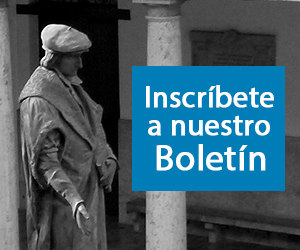Autor: Jonatán Cruz Ángeles (España). Profesor Ayudante Doctor en el Área de Derecho Internacional Público y Relaciones Internacionales, Departamento de Derecho Público y Común Europeo, Facultad de Ciencias Sociales y Jurídicas, Universidad de Jaén (España). ORCID: 0000-0002-8648-5525. Correo electrónico: jangeles@ujaen.es
Resumen: En este artículo exploraremos cómo ha reaccionado el Tribunal Europeo de Derechos Humanos (TEDH) ante la evolución de las “nuevas” realidades de la familia y, más concretamente, en qué medida ha contribuido a cuestionar y/o reproducir cómo se articula el vínculo que une a un hijo a su progenitor, basándose, en particular, en los artículos 8 y 14 del Convenio Europeo de Derechos Humanos. Como se demostrará, la definición de paternidad respaldada por el TEDH no siempre es clara por dos aspectos. En primer lugar, aunque valora cada vez más el interés y nivel de compromiso de un padre con su hijo, no abandona el modelo o esquema de “paternidad convencional”, al que, sin embargo, añade una “nueva” exigencia de cuidado. En segundo lugar, aunque la construcción emergente de la paternidad parece ser una cuestión de elección de doctrina, dependerá del caso en cuestión. Por lo tanto, no es de extrañar que fuerzas doctrinales y morales interactúen en este proceso de evolución jurisprudencial.
Palabras clave: Filiación; paternidad; jurisprudencia; Tribunal Europeo de Derechos Humanos; Estrasburgo.
Abstract: In this paper, we examine how the European Court of Human Rights (HUDOC) has reacted to the evolution of the «new» realities of the family, in particular to what extent this court has contributed to questioning and/or reproducing how the relationship between a child and the parent is established, based, especially, on the Articles 8 and 14 of the European Convention on Human Rights. As we will demonstrate in this paper, the definition of paternity, endorsed by the HUDOC, is not always clear for two reasons. On the one hand, even if we increasingly value the interest and the level of commitment of a parent to his child, it does not abandon the conventional parenting model or scheme. However, it adds a «new» demand for care. On the other hand, even though the emergent construction of paternity seems to be a matter of doctrinal choice, and it depends on the case. Therefore, it shouldn’t seem strange that doctrinal and moral forces interact in the process of doctrinal evolution.
Key words: Filiation; paternity; case law; European Court of Human Rights; Strasbourg.
Sumario:
I. INTRODUCCIÓN.
II. LA PATERNIDAD A LA LUZ DE NUESTROS DÍAS.
III. LA DETERMINACIÓN DE LA PATERNIDAD.
IV. SITUACIONES DE CRISIS FAMILIAR.
V. LA PATERNIDAD “NO CONVENCIONAL”.
1. El reconocimiento de la homoparentalidad.
2. El uso de técnicas de reproducción asistida.
VI. EL ESPECIAL DEBER DE CUIDADO PATERNO.
VII. CONCLUSIONES.
Revista indexada en SCOPUS (Q3), REDIB, ANVUR (Clase “A”), LATINDEX, CIRC (B), MIAR.
Referencia: Actualidad Jurídica Iberoamericana Nº 17, agosto 2022, ISSN: 2386-4567, pp. 550-575.






